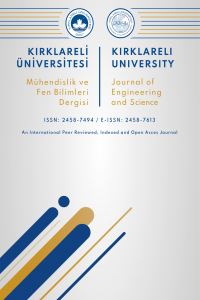THE INVESTIGATION OF POLYLACTIC ACID BASED NATURAL FIBER REINFORCED BIOCOMPOSITES FOR AUTOMOTIVE APPLICATIONS
An automotive application with renewable sources as environmentally sustainable solution has been studied for weight reduction. Hemp as non-woven natural fiber (NNF) and Polylactic acid (PLA) non-woven fibers has been used to form continuous mat by needle-punch method. This biobased mat structure was then hot formed to achieve good mechanical properties. The composition of the fiber was 50:50 / NNF:PLA and the density of the final sheet was 1300 gr/m2, the final thickness of the biocomposite after themoforming was 2.2 mm with 2.1 GPa Flexural Modulus and 17 MPa Tensile Strength and 2.3% elongation at break. In this study, the mechanical performance of this biocomposite structure under water immersion, 40ºC and 80ºC was studied. The charpy impact strength was found 21kJ/m2. The major outcome of this study is replacing conventional reinforcement materials with renewable sources which offers lower weight and tolerable mechanical strengths.
Anahtar Kelimeler:
Bio-based PLA polymer, Hemp natural fiber, Biocomposite, Automotive application
___
- [1] Bhattacharyya, D., Bowis, M., Jayaraman, K., Thermoforming woodfibre–polypropylene composite sheets, Composites Science and Technology, Volume 63, Issue 3-4, 353-365, 2003
- [2] Davey, S., Das, R., Cantwell, W.J., Kalyanasundaram, S., Forming of studies of carbon fiber composite sheets in dome forming processes, Composite Structures, 97, 310-316, 2013
- [3] Zampaloni, M., et al., Kenaf natural reinforced polypropylene composites: a discussion on manufacturing problems and solutions, Composites: Part A, 38, 1569-580, 2007
- [4] Hsiao, S.W., Kikuchi, N., Numerical analysis and optimal design of composite thermoforming process. Computational Methods in Applied Mechanics and Engineering, 177, 1-34, 1999
- [5] Xu, J., Widyorini, R., Yamauchi, H., Kawai, S., Development of Binderless Fibreboard from Kenaf Core, Journal of Wood Science, 52, 236-243, 2006
- [6] Feng, D., Caulfield, D.F., Sanadi, A.D., Effect of compatibilizer on the structure property relationships of kenaf-fiber/polypropylene composites, Polymer Composites, 22, 506-517, 2001
- [7] Mohanty, A.K., Drzal, L.T., Misra, M., Engineered reinforced polypropylene composites: influence of surface modifications and novel powder impregnation processing, Journal of Adhesion Science and Technology, 16, 999-1015, 2002
- [8] Auran Efendy, M.G., Pickering, K.L., Fibre orientation of novel dynamically sheet formed discontinuous natulra fibre PLA composites, Composites: Part A, 90, 82-89, 2016
- [9] Oksman, K., Skrifvars, M., Selin, J.F., Natural fibres as reinforcement in polylactic acid (PLA) composites, Composites Science and Technology, 63, 1317-1324, 2003
- [10] Wang, W., Lowe, A., Kalyanasundaram, S., Effect of Chemical Treatments on Flax Fibre Reinforced Polypropylene Composites on Tensile and Dome Forming Behaviour, International Journal of Molecular Science, 16, 6202-6216, 2015
- ISSN: 2458-7494
- Yayın Aralığı: Yılda 2 Sayı
- Başlangıç: 2015
- Yayıncı: Kırklareli Üniversitesi
Sayıdaki Diğer Makaleler
EVALUATION OF MECHANICAL CHARACTERISTICS OF THE INTERLOCKING CONCRETE PAVES PRODUCED FLY ASH
Can DEMİREL, Bahattin ÖZTOPRAK, Osman ŞİMŞEK
Yılmaz ÖZCAN, Nevzat ARTIK, Hatice ŞANLIDERE ALOĞLU
YAPAY SİNİR AĞI KULLANILARAK SU SEVİYESİNİN TAHMİN EDİLMESİ: YALOVA GÖKÇE BARAJI ÖRNEĞİ
Yunus DAMLA, Temel TEMİZ, Erdinç KESKİN
ÜÇLÜ KUANTUM TELİNDE ELEKTRİK ALAN VE LAZER ALAN’NIN ELEKTRONİK ÖZELLİKLERE ETKİSİ
SOME PROPERTIES OF NEUTROSOPHIC INTEGERS
ÜÇLÜ KUANTUM TELİNDE MAGNETİK ALAN VE LAZER ALAN’NIN ELEKTRONİKÖZELLİKLERE ETKİSİ
